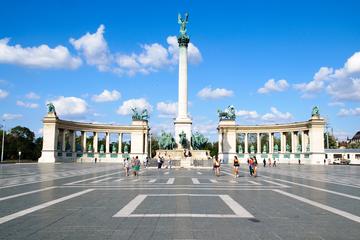Andrássy Avenue
TIME : 2016/2/22 11:28:06

Andrássy Avenue
The elegant boulevard of Andrássy Avenue was completed in 1885 as part of the expansion of Budapest under Emperor Franz Joseph I to celebrate the thousand-year anniversary of the state of Hungary. It connects the Pest-side city center at Erzsébet Square to the City Park (Városliget) and as a masterpiece of urban planning was listed as a UNESCO World Heritage site in 2002, along with Heroes’ Square.
Elegant townhouses lined the avenue and it became the preserve of wealthy bankers and the aristocracy. In order to conserve Andrássy’s architectural harmony, the city fathers decided to build a train line underneath the avenue. And so the Millennium Underground Railway opened, the first in continental Europe; it was first used to transport people from the city center to Városliget, which was the focus of the millennium celebrations in 1896.
Today the Art Nouveau architecture competes for attention with sleek cafés and bars and upscale shopping. In its 1.5-mile (2.5-km) march through Pest, Andrássy is punctuated by the vast octagonal square of Oktagon and is home to the Hungarian State Opera House, the House of Terror Museum in the old headquarter of the secret police, and Budapest’s gloriously grand and much-loved Gerbeaud Café.
Practical Info
The Millennium Underground Railway (M1) has several stops along Andrássy Avenue, including ones at Oktagon and Heroes’ Square.
